I’ve just come to the end of my French course; the fact that 30 days morphed into almost three months shows just how challenging and resource-rich it was and I’ve enjoyed every minute (well, okay ~ maybe not grappling with the subjunctive). Now I’m going to give myself time to absorb everything, read back through my copious notes and then start again right from the beginning, this time spending more time dipping in and out of the incredible range of linked resources; that should keep me busy for another year, at least!

Having re-established a fairly disciplined study habit, it’s time to get stuck once more into the 52-week permaculture course I started almost two years ago. I must be the slowest student on earth, but in my defence I have been a bit busy moving home and countries and at least I’ve spent a good deal of the last 18 months actually putting what I’ve been learning into practice. One of the many things I like about Heather Jo Flores’s teaching is her reminder that permaculture isn’t it; there are many different approaches to living an ecologically-sound, regenerative, abundant lifestyle and it’s important and enriching to consider a broad mix. However, I do feel that the principles of permaculture provide a pretty good framework for life so, as I pick up the course once again, it seems a good point to do a quick assessment of how we’re doing in our new home so far. I did this when we had been living in Asturias for several years using David Holmgren’s 12 permaculture principles, so I’m going to use the same idea but keep it fairly brief and choose just one current example to illustrate each point. If nothing else, this should give me something to refer back to and build on in the future.

Observe and interact Last year was a nightmare where growing beans was concerned; having initially planted directly into the ground, I ended up replanting several times and then finally resorting to planting in trays as each successive crop failed. Close observation of the beans’ attempts to germinate and (in very rare cases) grow beyond their cotyledons suggested that there were undesirable creatures tucking in ~ bean seed fly and wireworm being the worst culprits ~ and given the less-than-great condition of the soil, they were really up against it. This year I have pre-sown everything in trays of good compost, starting them off in the warmth of the tunnel; this has meant nearly 100% germination, no pests and trays of plants that are strong and healthy when they go into the ground. I’ve been working hard on soil improvement and every planting hole has been carefully prepared; that’s been quite a task in itself as so far I’ve planted 40 climbing borlotti beans, 84 Asturian climbing fabas, and between 40 and 50 each of Dwarf beans ‘Purple Teepee’, ‘Stanley’ and ‘Delinel’ with more to come as we go through the summer. To date, I’ve lost just one plant, which suggests this is a principle well worth spending time on.

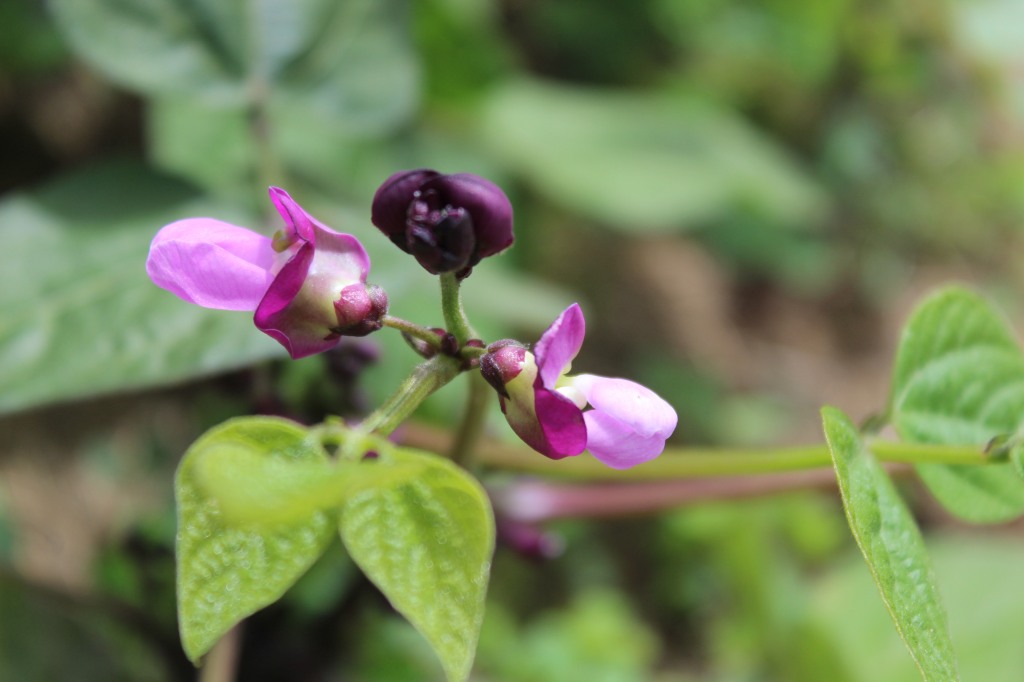
Capture and store energy When he hasn’t been picking cherries, Roger has been busy fetching logs from the coppice this week. This is all dead, fallen wood; we haven’t cut any live trees, and in fact there is so much wood already down that I doubt we ever will (we prefer to plant trees where we can!). For us, the coppice is a precious environment to be cherished and preserved so we take the minimum from it and leave plenty of dead wood in place for the wildlife. Logs need to be properly seasoned before they are burnt, so we are always working on a supply for a couple of years’ time, splitting the logs and stacking them outside to air dry before eventually moving them into the barn. This store of captured ‘solar’ energy will heat the whole house through the colder months as well as provide us with heat for cooking and water.

Obtain a yield Permaculture isn’t just about gardening so a ‘yield’ can mean many things, but since being as self-sufficient as we can be in fruit and vegetables is a top priority for us, then obviously garden produce is high up the list. This week has seen us eating globe artichokes, broad beans, peas, courgettes, cucumbers, peppers and chillies (from the tunnel), lettuce, chard, radish, a wide range of fresh herbs and edible flowers, strawberries, cherries, gooseberries and raspberries all fresh from the garden.


Apply self-regulation and accept feedback When I was teaching, I used to encourage my pupils to be brave about making mistakes as that is the best way to learn and, as a learner myself, I’ve been relieved to hear the same advice being shared in both the French and permaculture courses. I love the challenge of learning new skills or exploring different ways of doing things but life isn’t perfect, and inevitably some things will go wrong along the way. Using mulches of organic materials in the garden is a practice we have embraced more and more and there are many benefits: weed suppression, moisture retention, topsoil protection, improvement of soil structure, creation of worm heaven . . . however, this week has seen me removing all the mulch from around the potato plants in what has been something of a cautionary lesson. Common sense should have told me that the ground needs to be full of moisture before applying a generous layer of mulch; with the significant reduction in winter and spring rainfall plus a period of prolonged drought through April and May, the ground remains very dry despite some recent rain, and scratching our heads as to why the potatoes aren’t exactly flourishing, our thoughts turned to the mulch. Scraping back revealed earth that was damp in some places but dry as toast in others ~ where rain had fallen, the mulch had absorbed the moisture but prevented it from passing through. Feedback accepted: I need to be more mindful of mulch and moisture in the future.

Use and value renewable resources and services Hanging washing out on the line beneath a beautiful blue sky this week, I have been thinking what a blessing sunshine and warm breezes are, free and natural renewable resources that have the laundry dry and smelling sweet in no time. That said, it’s flowers I want to talk about under this heading. I have always loved flowers, preferring those of a wilder nature than what I tend to think of as more formal ‘florists’ flowers’, and our garden has always burst with colour and scent in a fairly chaotic scramble of blooms. I’ve grown them for aesthetic reasons and for the benefit of wildlife but increasingly now, I also see flowers as an essential and precious resource in other ways. Herbalism has long been an interest of mine and the strengthening, healing and balancing nature of using flowers as gentle home medicine has become something of a priority in recent years. This week I’ve been drying elderflowers, yarrow, rose petals, clover, daisies, thyme, calendula and honeysuckle to use in infusions to take as tea, to steep in oil and use in salves and soaps or simply to float in a soothing bath.

Next will be lavender which has so many applications, then meadowsweet and soapwort to follow. Flowers have much to give in the kitchen, too, and a salad without a sprinkling of delectable floral edibles just isn’t a salad in my book! I haven’t had any time for spinning or dyeing lately but I will get back to it, and flowers will play an important part in making natural dyestuffs then. What a wonderful resource ~ and the real beauty lies in the fact that they will be there again for more of the same next year.

Produce no waste Moving towards zero waste is an ongoing activity both in terms of applying the ‘refuse, reduce, re-use’ mantra and at the same time tapping into our waste streams to (in permaculture terms) turn pollutants into resources. Making compost has long been hailed as a positive and beneficial activity yet I am puzzled by the amount of local people ~ especially in such a rural area ~ who trail off to the local recycling centre every week with piles of green waste; it’s no exaggeration to say that last time we were there, the green waste bay was like a huge towering cliff face. I contacted the council out of interest to ask what they do with it all, as I know some councils in Mayenne turn it into compost and offer it back to local people; apparently in our council, it’s all chopped periodically and given to farmers. When I started the permaculture course, I had to sketch designs for three systems I wanted to put into place and, knowing we were soon to be moving here to a flat garden with plenty of space, a decent three-bay compost system was top of my list. We made it from found materials (other people’s waste) and it’s now in full swing, packed with compost at various stages of production.

Every scrap of biodegradable waste goes in to the current pile; I ‘feed’ it daily with a compost bucket we keep in the kitchen and when each nitrogen-rich green layer is sufficient, I cover it with a carbon-rich brown layer of sawdust, dead leaves, shredded cardboard and the like. I also throw in small amounts of comfrey and yarrow leaves from time to time, natural activators growing in the garden that help to speed the decomposition process along. It’s a closed loop which is exactly what this principle aims for. Last autumn, I spread a thick layer of compost in the tunnel and let the worms work it down before spring planting; this week, we have harvested the first peppers grown in that compost and the trimmings from them have gone back into the compost heap. No waste. Not a scrap!

Design from pattern to detail This is a principle I wasn’t very sure about at first but now I see it as meaning to start with the big picture, an overall (vague?) plan for a project and then work it down to the finer details, using patterns found in nature wherever possible. I’ve written a lot about my mandala bed (sorry about that, I’m just a teeny bit pleased with it) which, following on from the composting system above, was the second design project I sketched out so I’m going to use it here, although I would argue we worked along the same lines when designing the Utility Cabin and Love Shack and also renovating the kitchen. I started with a plain circle and having fiddled around with several pattern ideas for paths and beds, decided to keep it simple with a radiating pattern, the kind that can be seen in snowflakes, starfish and many types of flower.

I’ve added each element one at a time and the planting has evolved slowly, working with intuition as much as anything. It wouldn’t win a Chelsea gold, but it’s brimming with food and life (although I’m not sure the blackbirds scratching the mulch onto the paths every morning is much of a bonus) and the beauty of it is that, if in the final analysis I feel things could be improved, it’s simple enough to go back to the starter circle and find inspiration in a different pattern for next year.

Use slow, small solutions If we had to name just one priority for the garden, then soil improvement would probably be it. Making a productive garden from grassland was always going to take time: on the one hand, the soil here is a very deep and stone-free sandy loam; on the other, it is sadly lacking in nutrients and organic matter and also riddled with pests. We have been working at it from day one but there is no rushing this process; good soil takes time and we have to go patiently, step by step. I’ve been looking at the work of Ian ‘Tolly’ Tolhurst who, for several decades, has run a vibrant and productive organic market garden without any animal inputs. This interests me greatly as we currently have no livestock in our system here and, as I have written before, there can be serious drawbacks in importing manure from other sources. If we can manage to improve the soil using only inputs from our land then that would not only be desirable, but another no-waste, closed loop. So, how can we do it? Obviously, the aforementioned compost is an important element but since we can’t produce enough for the whole garden quickly, then when a finished bay is ready for emptying, we have to prioritise where it goes. Another very beneficial addition is soil from the coppice which we collect in modest amounts from time to time; this is such a valuable and nutrient-rich material that it can be used in tiny amounts ~ it is said that even a single trowel of woodland soil stirred into a bucket of water and then watered onto the soil brings huge benefits.
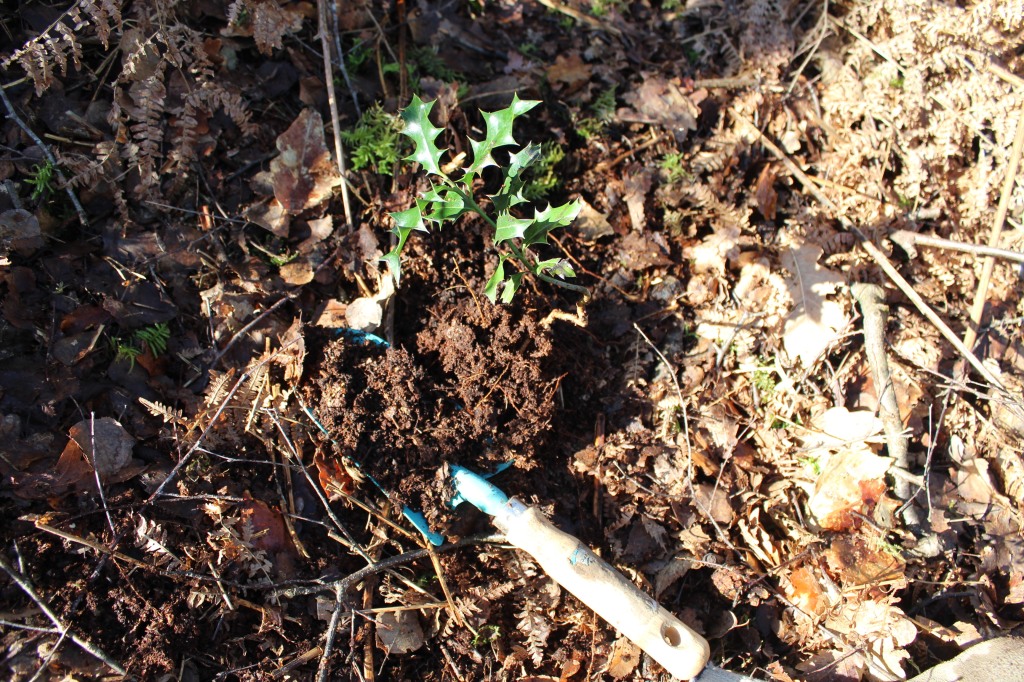
Mulches are helpful, too (putting aside the potato experience). As we have a large amount of mature trees, grass clippings tend to come mixed through with chopped leaves which is an excellent mulch mixture. Having established seven large comfrey plants, I am regularly chopping the leaves and laying them on the soil surface (I did the same with nettles before they flowered) as a natural fertiliser, and I also make comfrey and nettle tea to water on for the same purpose. Where we’ve needed to really boost planting areas, such as the lasagne beds for courgettes and sweetcorn, I kept coffee grounds separate from the compost bucket and sprinkled them over the surface. Dilute urine went on, too; I know this can evoke a ‘yuk!’ response even from many hardened gardeners but honestly, it’s one of nature’s finest fertilisers, it’s plentiful and free so why waste it? The Love Shack has lent itself to yet another function ~ the perfect place for a ‘wild wee’! 😂 Tolly is a huge advocate of green manure and that’s another area I’ve been exploring and expanding over several years now.
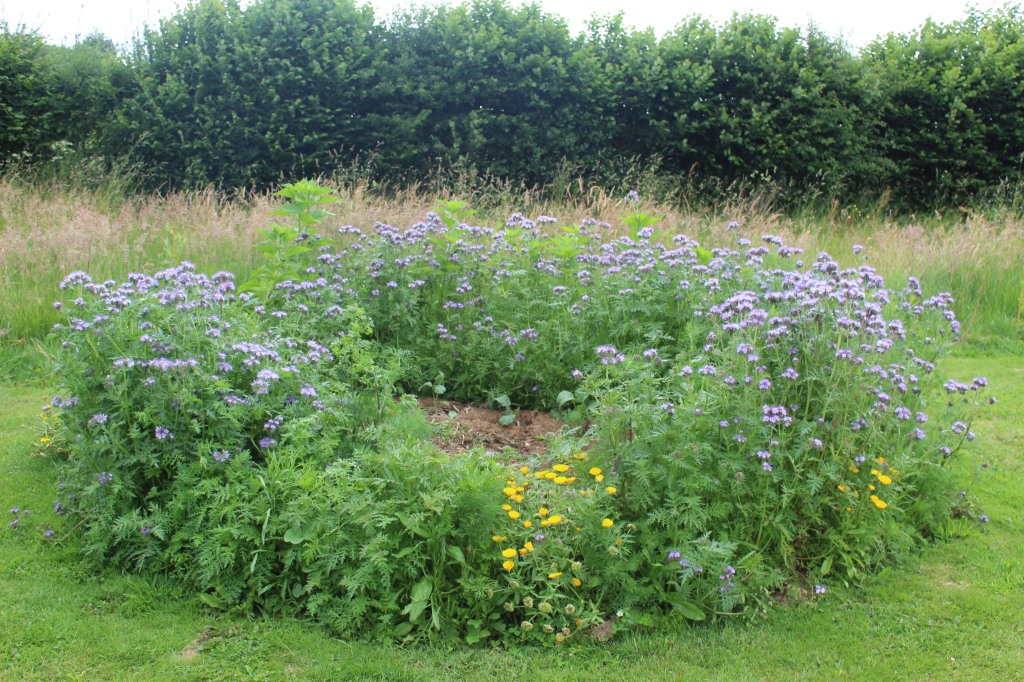
Phacelia is a great favourite and certainly the most enthusiastic, freely setting itself over and over if left to seed. I grow swathes of it in places to cut very young when the nutrients are at their highest ~ I’m about to cut a mix of phacelia and crimson clover in a patch for planting winter brassicas ~ and in other spaces, I let it bloom as it is one of the top flowers for bees. I’m hoping that by introducing it to all areas of the garden, I shall never have to buy seed again! Buckwheat and crimson clover are also successful and I’m planning to sow vetch along with phacelia as an overwintering cover crop this year. I let nitrogen-fixing white clover run wherever I can and where we grow peas and beans, the roots are left to rot away underground after the plants have finished. I haven’t been able to source trefoil seeds to undersow the summer brassicas so I’ve pushed a few nasturtium seeds in between them to do the job instead. It’s a slow and steady process, but we will get there.

Integrate, don’t segregate Our property is surrounded by monoculture: to the west, a huge field of maize, to the north and east what seems like a prairie of wheat. The view to the south is green and leafy, a pretty pond surrounded by grass and trees . . . but look beyond the few oaks and silver birches and in fact, it’s really a conifer plantation. Inside our boundaries (please let those hedges grow quickly!) it is polyculture all the way: the greater diversity of plant species and varieties we grow, the greater our potential yield and the most diverse ecosystem possible. When it comes to planting, I’m a bit of a crammer and I love a fairly chaotic jumble so this principle suits me just fine. I haven’t tried planting an ‘official’ plant guild yet but that’s something I might dabble in a bit next year.


Value diversity This follows on from the last principle and diversity is certainly something we embrace and encourage. When it comes to planting, several different varieties of things makes more sense than one and in fact, doing a quick mental assessment, there are very few vegetables of a single variety that we are growing this year (and those are mostly the ‘wild cards’ like swedes, cauliflowers and melons: if they’re successful in this first season, I’ll extend the range next year.) What has truly thrilled us this year is the noticeable increase in the diversity of wildlife and wild flowers on our patch; I’m hoping at some point in the future to have time to catalogue everything I see here but for the time being, it’s a pleasure to wander round and observe ~ then very often, head to some reference materials to identify the latest ‘new’ arrival, especially where insects are concerned. It’s very exciting and we have plenty of ideas for increasing the range of habitats in the future; the pond is filling at snail’s pace (it would help if it rained occasionally, ha ha!) but there are other things we can be doing in the meantime. For example, Roger has been using some scrap materials to make a base for a bug hotel which we’re hoping Annie and Matthew will help us fill when they visit next month.
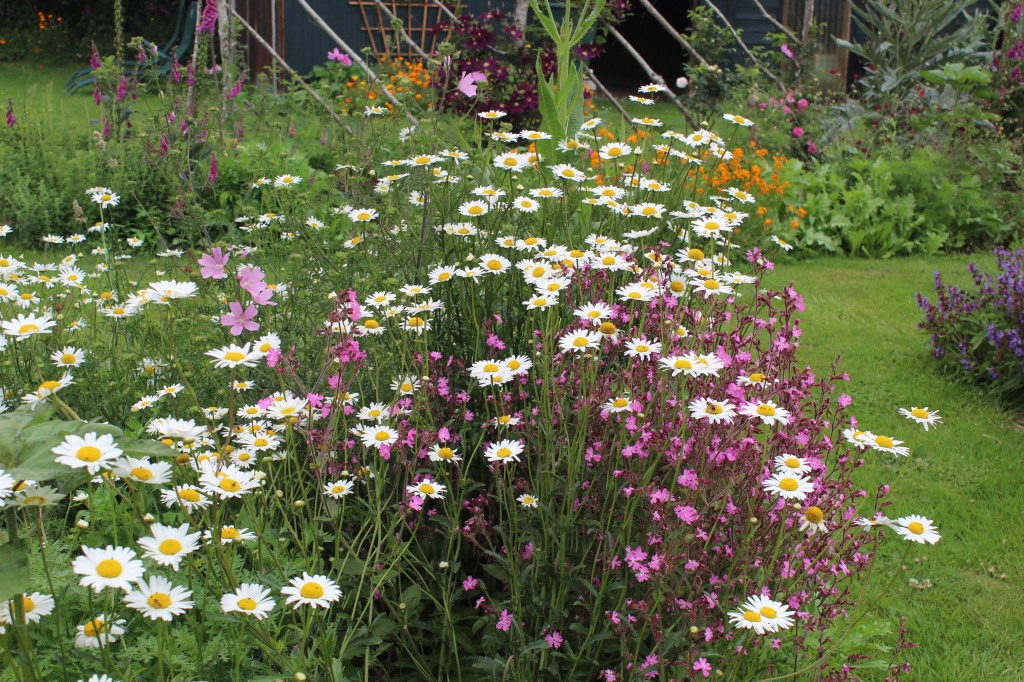


Use edges and margins Permaculture is very big on using edges and margins as places that are often extremely fertile; in abstract terms, that also means stretching ourselves to the edge of our comfort zone and thought processes to encourage innovation. In the garden, we see the boundaries both as sources of food and natural materials for ourselves and also as important habitats for wildlife. Tackling that enormous hazel hedge last year was a huge job but it was definitely the right decision; it has let in more light which in turn has encouraged a wider diversity of wildflowers to grow below it, and as it thickens out it is creating a perfect habitat for birds. We leave the grass uncut inside every boundary, several metres deep in some places, and these margins create their own little ecosystems bursting with life and all-important wildlife corridors for useful predators which theoretically then feast on the beasties that love to tuck into the veggie plants. It’s fascinating to see how each ‘edge’ is currently frequented by a different array of wildlife: butterflies and burnet moths here, damsel flies and ground beetles there, grass snakes in one corner, toads in another.
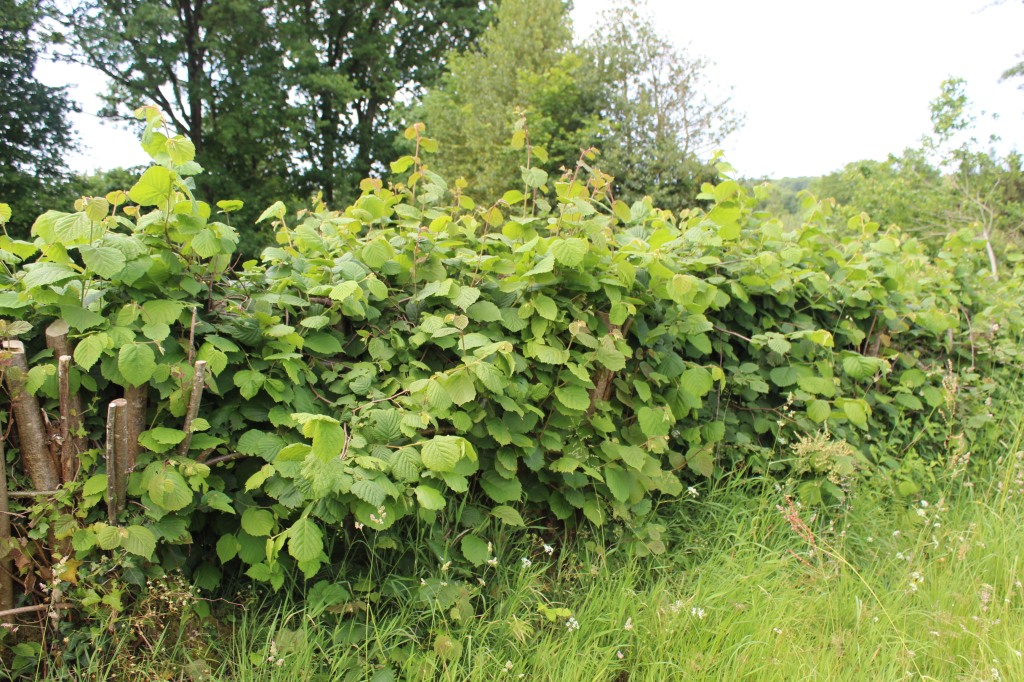

Respond positively to change Unexpected changes aren’t always welcome or easy to deal with, but since change is a constant in life, I appreciate that developing a positive attitude towards it makes for a more balanced and sustainable approach. A couple of weeks ago, I finally had to admit that my Purple Peril, the bike I’ve had for almost 20 years, had reached the end of the road (actually, it was no longer capable of getting to the end of the road which is the very point). It is a rust bucket, bent and buckled with gears that are totally shot; Roger has fixed it and patched it more times than I can remember but there are limits, even with his super engineering abilities. Please don’t get me wrong and think me a spoilt thing, I appreciate how blessed I am to be able to go out and buy a shiny new bike. My reluctance in replacing it stemmed from the fact that I wasn’t convinced I would be able to find a worthy replacement: everything on offer seemed to be either a roughty-toughty mountain bike or a genteel Dutch (town) bike and I need something in between. Ta-dah . . . enter New Blue (I haven’t come up with a proper name yet so that will have to do for now)! This is just perfect, designed for riding on our rural lanes, zipping about town and going off down forest trails and the like when I fancy a bit of off-roading. There’s a fair bit to adjust to: the gear controls are all on one side and involve flicking levers to and fro; the handlebars have a sort of flat paddle shape to them which seems a bit strange; the seat isn’t as comfy as my old bike but the riding position is much better; the pedals are ~ well ~ a bit weird, if I’m honest. On the plus side, the gears are incredibly smooth and the chain doesn’t jump off and jam every time I change up, there are good lights, my basket fits and, joy of joys, without rear suspension there’s room for a luggage rack and panniers. Hopefully, this is the start of a beautiful relationship that sees us notching up many a happy mile together and cutting car use to the very barest of minimums. Before we moved here, I promised I would ride my bike whenever I could, not using bad weather or mechanical unreliability as an excuse. Well, there shouldn’t be any of the latter now. Time to stick to my principles. 😊


No mudguards 😲? My my, what a dry climate you live in. I would never even consider riding a bike without mudguards. All looking lovely. Talking of pests, the leverets also like celeriac and swede seedlings…very interesting about the soil needing to be moist before applying the mulch.
LikeLiked by 1 person
Crazy, isn’t it? One of the first things we noticed when we started coming to Mayenne over 20 years ago is that even on the coldest, wettest days in winter, the roads dry quickly as soon as it stops raining. It’s amazing to have leverets but I’m hoping there isn’t too much hare gardening going on here while we are in Norway. I’m kicking myself about the mulch, it makes sense not to mulch dry earth when you think about it . . . and I read Patrick Whitefield saying just that in the Earth Care Manual last night. So much for hindsight, I should have gone to my reference books first! 😂
LikeLike
Many thanks for explaining the principles in context.
LikeLiked by 1 person
You’re welcome, James. There are many interpretations of the principles (and in fact, for some people there are more principles, too) but I like these 12 and in particular the way they can be applied to our attitudes and behaviours as well as to more practical matters. There’s plenty to contemplate! Looby MacNamara’s work is particularly interesting and has a very positive and joyful view of life and the future of the planet and human beings.
LikeLiked by 1 person
I love your new bike…she’s gorgeous! You are making me feel very lazy with all your learning! My Spanish moves on slowly due to necessity and I recently found a very enthusiastic permaculture gardening blog in Spanish…Two birds with one stone thought I! However I could also compile a hefty tomb called ‘ the Barbour Book of excuses ‘! Honest guv, after 4 or more hours of online teaching in the mornings, sweeping the patio and pottering aimlessly until I can go for a swim or it’s cool enough to walk Rocky is about my limit! The recent heatwave…too hot, too soon, has added a chapter to the book! I have several drafts on my site and can’t find the energy to complete them! Walt has just serviced my bike and added two new ‘ hybrid’town/ country tyres. I have fewer classes next week and between 6.30 and 8am ut is blissfully cool perfect for the bike..pues Ánimo 💪 yo voy! ( unless I come up with another excuse! ).
LikeLiked by 1 person
Ah, I’m known to do the excuse thing too when it suits me . . . and especially when it comes to things like running! Anyway, dealing with that heat is exhausting in itself and I really don’t blame you for needing to relax your brain after all that teaching. There’s only so long you can stare at a computer screen in a day, isn’t there? Enjoy your early morning bike rides! x
LikeLike